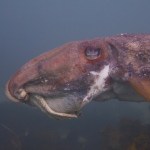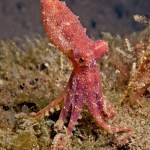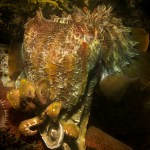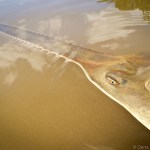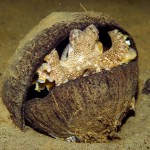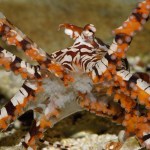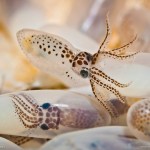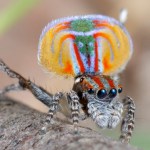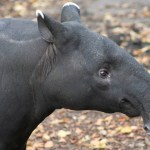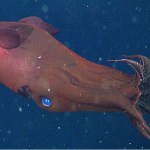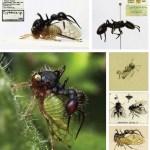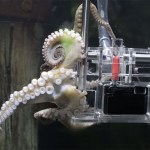Organisms
Good news, everyone! The US Fish and Wildlife Service has decided that captive chimpanzees deserve the same protection as wild chimpanzees. We've been living for years with a peculiar split decision that says it is illegal to experiment on some chimps, the ones still living in the wild, but other chimps, those that live in research colonies, have fewer protections.
This is a good thing. I'm all for research on chimpanzees -- I want to see more studies done on our closest relatives -- but it has to be done in a way that respects their right to live, just as we do a great deal of research on…
The giant cuttlefish fades and dies after mating. Somehow they maintain a little dignity in dying.
Giant Cuttlefish
Celebrate the occasion, appreciate what's going on in the deep!
By carrying that coconut, octopuses of this sort made a change in their legal status necessary.
FAQuatics
The extent of octopus intelligence is debated, at least among vertebrates, but there is evidence of pretty complex behavior, including possible tool use. See, e.g., J.K. Finn, T. Tregenza, and M.D. Norman, "Defensive tool use in a coconut-carrying octopus," 19 Current Biology 1069 (2009). The evidence was enough to convince the UK to grant protection to the common octopus (Octopus vulgaris) in 1993, thus ironically granting it a certain elite status.
That discrimination ended in 2010…
This town in Australia got some unusual precipitation: millions of spiders that proceeded to blanket the entire town with cobwebs.
Vast, dense swarms of migrating squid, all swirling about a boat. How can the sailors resist leaping into the water with them?
I'm picturing millions of tiny beaks, each taking a tiny nip, and millions of tentacles, each stroking and rasping away a thin layer of skin, all in endless succession. And then as the blood painted the waters, a boiling, roiling mass would heave over you, each little slimy creature frantically slurping up a tiny piece of you, until nothing was left but shiny white bones disarticulating to tumble down to the bottom of the sea, where the bone worms would gnaw you…
I am sure that's exactly what you think when you see a picture of vampire squid.
But it's true! Where most cephalopods do the deed once, spawn, and die, Vampyroteuthis has multiple cycles of reproduction. Unfortunately, they're also cold, gelatinous, and lethargic…which, if you think about it, is also what the undead vampire of myth would be like, so they're just fulfilling the stereotype.
This leafhopper is a myrmecomorph - it has sprouted lumpy dark extensions of its carapace that resemble an ant. It spends its whole life living in a costume!
Cyphonia clavata: The treehopper Cyphonia clavata with a mimic of an ant (top right) extending from its pronotum (photos: M. Stensmyr). The ‘ant’ presumably serves to deter predators as the treehopper struts about its habitat (lower left, photo: S. Sanowar). This peculiar-looking insect has also been depicted historically several times, as exemplified here by illustrations by (from top to bottom) Caspar Stoll (1788), Jean Antoine…
They know how to use gadgets!
It's not a blanket, it's a train.
Wired

